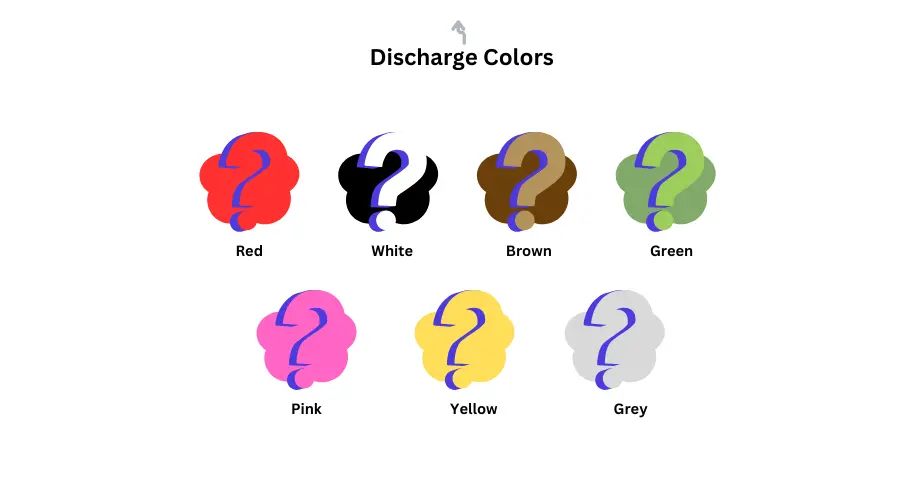
Vaginal Discharge: Different Colors and What They Really Mean
Let’s talk about vaginal discharge—it’s something every woman experiences, but it’s rarely discussed openly. Vaginal discharge is a normal part of your body’s process to keep things clean and healthy. However, it can be hard to know what’s normal and what might signal something to pay attention to. That’s why understanding the colors and consistency of vaginal discharge can empower you to take better care of your body and catch any potential issues early.
In this post, we’ll break down what different colors of vaginal discharge can mean, when you should be concerned, and when you can relax. Let’s dive in!
What is Vaginal Discharge?
Vaginal discharge is a fluid produced by your vagina and cervix to clean and protect the vaginal area. It helps to:
- Flush out dead cells and bacteria
- Keep the vagina moist
- Maintain a healthy balance of bacteria (important for preventing infections)
The amount, color, and consistency of discharge can vary throughout the month depending on where you are in your menstrual cycle, your health, and even what you eat or how stressed you are. While discharge is typically harmless, changes in its color or consistency can sometimes be a sign of something else. That’s where understanding the different colors of discharge comes in!
Different Colors of Vaginal Discharge and What They Mean
1.Clear or White (Normal and Healthy)
Clear or white discharge is perfectly normal and is usually the sign of a healthy vagina. It’s often seen at the beginning or end of your menstrual cycle. When you’re ovulating, you might notice more clear, slippery discharge, which helps sperm travel to the egg (so it’s perfectly natural to have more during those days).
When to relax: Clear or white discharge is usually nothing to worry about, especially if it’s not accompanied by discomfort.
2. Creamy or Milky White (Completely Normal)
Creamy or milky white discharge is often seen after ovulation or just before your period. It’s a good sign that your body is keeping things clean and healthy. The consistency can vary depending on your hormones, but a little creamy or milky white discharge is completely normal.
When to relax: If it’s odorless and not accompanied by irritation, this is normal and doesn’t require concern.
3. Yellow (Can Be Normal, But Watch for Changes)
Light yellow discharge can sometimes be seen during your cycle, especially if your body has been exposed to things like diet changes, stress, or illness. If the yellow discharge is not foul-smelling and doesn’t come with discomfort, it’s usually harmless. However, if the color becomes a darker yellow or is accompanied by other symptoms like burning or itching, it may be worth investigating further. When to monitor: If the yellow discharge is accompanied by any odor, irritation, or discomfort, consider making an appointment with your healthcare provider.
4. Green (Time to Check In with Your Doctor)
Green discharge can be a sign of an infection—often a bacterial infection or STI like trichomoniasis. If the discharge is green and has a foul odor or is accompanied by symptoms like pain, burning, or itching, it’s important to see your doctor to rule out any infection.
When to panic: If your discharge turns green and has a strong, unpleasant odor, or you experience pain, make an appointment with your gynecologist.
5. Brown (Old Blood, Usually Nothing to Worry About)
Brown discharge typically happens at the beginning or end of your period, as the body expels old blood that didn’t come out during your cycle. This is generally nothing to worry about, and the color will typically lighten as the blood clears out of the uterus.
When to relax: Brown discharge outside of your period or between cycles can sometimes happen but should be monitored. If it happens regularly or is accompanied by pain or other symptoms, it’s worth checking in with a healthcare provider.
6. Pink (Spotting or Early Pregnancy)
Pink discharge could signal spotting, which often happens in early pregnancy or as a result of ovulation. It can also occur when there’s a minor irritation or after sex. If you suspect pregnancy and have pink discharge, you may want to take a home pregnancy test or consult with your doctor.
When to relax: If you’ve had spotting around the time of ovulation, this is common and nothing to worry about. However, if you’re late for your period and have pink discharge, it’s a good idea to see a doctor.
7. Gray (Bacterial Infection or STI)
Gray discharge—especially if it has a fishy odor—could be a sign of bacterial vaginosis (BV), a condition where there’s an imbalance in the natural bacteria of the vagina. BV is treatable with antibiotics, so if you notice gray discharge with an unusual smell, it’s time to check in with your gynecologist.
When to worry: If your discharge is gray and has a strong, unpleasant odor, see a healthcare provider for a diagnosis and treatment.
When to Worry and When to Relax
Most changes in vaginal discharge are normal and part of your cycle, especially when they’re odorless, non-irritating, and not unusual in consistency. However, there are signs that might indicate something more serious is happening. Here’s a quick guide on when to pay attention:
Signs You Should See a Doctor:
- Discharge that’s green, gray, or foul-smelling
- Discharge with pain, itching, or irritation
- Unexplained spotting or bleeding between periods
- Any pain during sex or painful urination
Signs You Can Relax:
- Clear, white, or creamy discharge with no unusual odor or irritation
- Brown discharge at the end or beginning of your period
- Light yellow discharge that doesn’t cause discomfort
The Bottom Line: Trust Your Body and Ask Questions
Your body is smart—it communicates with you every day through things like vaginal discharge, mood changes, and physical symptoms. While many types of vaginal discharge are perfectly normal and part of your menstrual cycle, it’s important to stay attuned to your body and recognize when something doesn’t feel right.
If you’re ever in doubt, don’t hesitate to talk to your gynecologist or healthcare provider. You deserve to feel empowered and informed about your body—discharge included!
Conclusion
Take Care of Your Health, Embrace Your Body: Normalizing discussions about vaginal discharge, changes, and menstrual health will help you take charge of your well-being. Your body is amazing, and learning to listen to it, rather than worry about it, will help you stay on top of your health. For more information, locate our Blog section.
All Categories
Recent Posts
When Your Period Hits Hard: Menstrual Cramps Self-Care
True Stories of Period Poverty From Africa
Tags
Give them a helping hand
Every donation fuels our mission to combat period poverty. Your generosity brings us closer to menstrual equity.
+234-909-482-1642
inquiries@blossomflow.org




